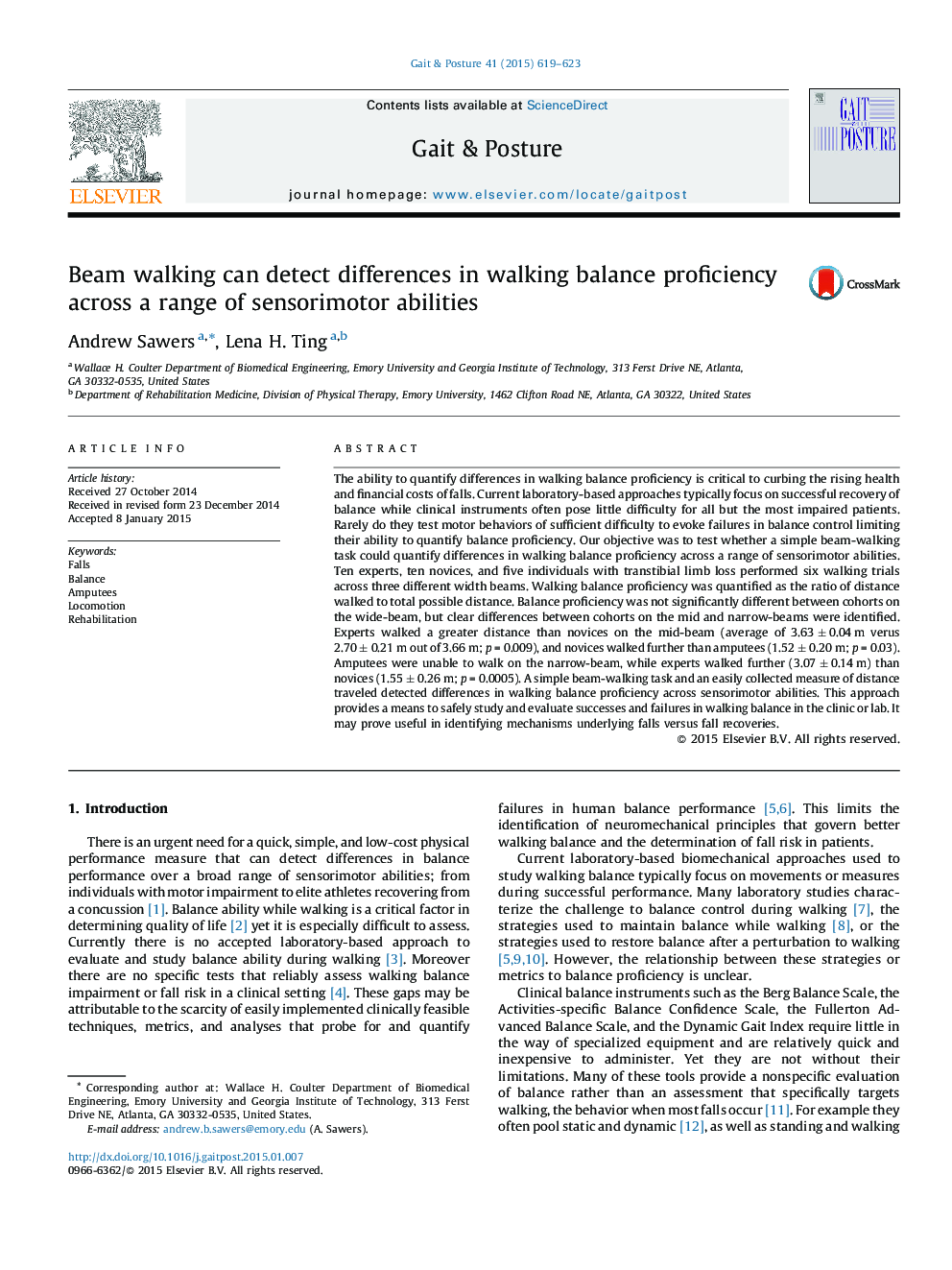| کد مقاله | کد نشریه | سال انتشار | مقاله انگلیسی | نسخه تمام متن |
|---|---|---|---|---|
| 6206166 | 1265640 | 2015 | 5 صفحه PDF | دانلود رایگان |
- Most balance assessments are of insufficient difficulty to evoke balance failures.
- Beam walking may provide a simple and stringent assessment of balance failures.
- Beam walking was used to probe balance proficiency across sensorimotor abilities.
- Beam walking discriminated between expert, novice and impaired balance proficiency.
- Beam walking may prove useful as a clinical and research tool.
The ability to quantify differences in walking balance proficiency is critical to curbing the rising health and financial costs of falls. Current laboratory-based approaches typically focus on successful recovery of balance while clinical instruments often pose little difficulty for all but the most impaired patients. Rarely do they test motor behaviors of sufficient difficulty to evoke failures in balance control limiting their ability to quantify balance proficiency. Our objective was to test whether a simple beam-walking task could quantify differences in walking balance proficiency across a range of sensorimotor abilities. Ten experts, ten novices, and five individuals with transtibial limb loss performed six walking trials across three different width beams. Walking balance proficiency was quantified as the ratio of distance walked to total possible distance. Balance proficiency was not significantly different between cohorts on the wide-beam, but clear differences between cohorts on the mid and narrow-beams were identified. Experts walked a greater distance than novices on the mid-beam (average of 3.63 ± 0.04 m verus 2.70 ± 0.21 m out of 3.66 m; p = 0.009), and novices walked further than amputees (1.52 ± 0.20 m; p = 0.03). Amputees were unable to walk on the narrow-beam, while experts walked further (3.07 ± 0.14 m) than novices (1.55 ± 0.26 m; p = 0.0005). A simple beam-walking task and an easily collected measure of distance traveled detected differences in walking balance proficiency across sensorimotor abilities. This approach provides a means to safely study and evaluate successes and failures in walking balance in the clinic or lab. It may prove useful in identifying mechanisms underlying falls versus fall recoveries.
Journal: Gait & Posture - Volume 41, Issue 2, February 2015, Pages 619-623
